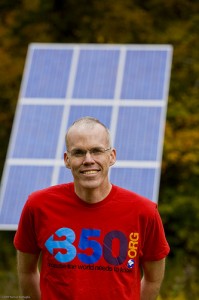 What would you do if your doorbell rang on Halloween and instead of saying “trick or treat!” your visitors handed you a new, curly-cue light bulb (or two)? This year’s Halloween saw an event that was a brand new take on the usual compact fluorescent light bulb canvasses that the CEA hosts. We are thrilled to see that this creative event went off without a hitch, and that it has set a great precedent for following years!
What would you do if your doorbell rang on Halloween and instead of saying “trick or treat!” your visitors handed you a new, curly-cue light bulb (or two)? This year’s Halloween saw an event that was a brand new take on the usual compact fluorescent light bulb canvasses that the CEA hosts. We are thrilled to see that this creative event went off without a hitch, and that it has set a great precedent for following years!
Please see below for the post featured on the Green Medford blog:
A group of us from Green Medford and Fletcher Green (a Tufts graduate student group) trolled the streets around the Columbus School last night–Halloween evening–handing out bags of treats to delighted and laughing residents at 84 addresses. People who answered their doors expecting to give out candy were instead handed a bag containing two new energy-efficient lights. Event participant “Sherlock Holmes” noted, “It was gratifying to see how surprised and happy this made people.”
One resident told us, “This is such a great idea! We recently switched all of our bulbs to CFLs and are saving $60 a month.” She turned to her neighbor and said, “You have to take some. This is amazing!”
We gave out more than 180 CFLs that were donated by National Grid and the Tufts Office of Community Relations. The First Annual Medford Reverse Trick or Treat exceeded our expectations, and we are already looking forward to expanding on our success with a bigger event next year!
Thanks so much to all the sponsors and others who helped organize this event, especially JR Siegel, Allie Lipps, Becky Hemperly, Kim Wardwell, Catherine Smith, Alicia Hunt, Brad Steele of EFI, and Barbara Rubel at the Tufts Office of Community Relations.
Susan Altman
Green Medford


 The Cambridge Energy Alliance has participated in many CFL exchange canvasses. On a chosen day, we and volunteers head out into neighborhoods and knock on doors, offering to give an equal number of CFLs for the number of regular light bulbs a household will hand us. As a special treat with Halloween approaching, Green Medford has announced an event that is a new take on this idea.
The Cambridge Energy Alliance has participated in many CFL exchange canvasses. On a chosen day, we and volunteers head out into neighborhoods and knock on doors, offering to give an equal number of CFLs for the number of regular light bulbs a household will hand us. As a special treat with Halloween approaching, Green Medford has announced an event that is a new take on this idea.  Under mounting pressure from 10-10-10 groups, 350.org’s Bill McKibben, and various other environmental activists, the Obama Administration
Under mounting pressure from 10-10-10 groups, 350.org’s Bill McKibben, and various other environmental activists, the Obama Administration 





